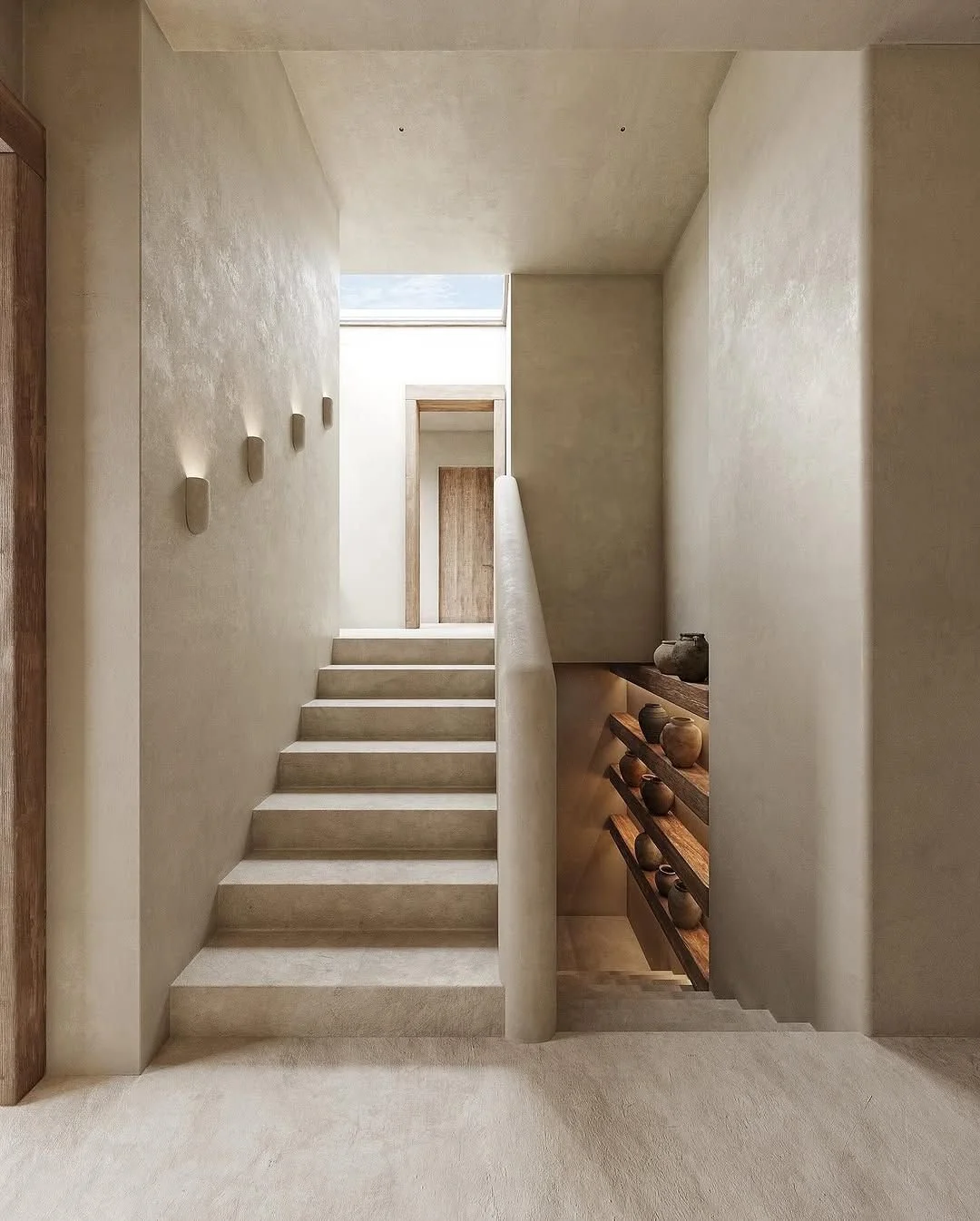Tactile Living: How Surfaces Shape Emotional Comfort
In design, beauty is often about what we see: light, colour, shape. But what we touch can be just as powerful. Texture is the quiet mediator between human and space; and this connection is what design professionals pursue through materiality.
Design psychologists have long noted that texture connects us to our emotions. In minimalist interiors especially, where form is restrained and colour is subdued, texture becomes the language of emotion.
For example, a wall finished in microcement reveals subtle irregularities, the traces of craftsmanship visible in each trowel stroke. It’s an effect you feel as much as you see; sleek and meditative yet richly enveloping, inviting both clarity and warmth into the mind. A material that holds both strength and stillness, microcement is quiet confidence, creating calm through continuity.
Via @yana_design_home
Quartz Carpet, on the other hand, creates a tie to the natural world, with tactile characteristics that recall sand, stone, and sunlight — a surface that feels alive, not manufactured.
Some more examples of how touch influences emotion:
Linen feels lived-in; it makes you feel at ease — crumpled, familiar, effortlessly human.
Travertine and limestone ground you in the elemental — they hold the memory of the earth, calm and enduring.
Velvet is indulgent and soft — comforting in its weight, quietly luxurious, a texture that holds warmth and light in equal measure.
Unpolished timber provides a link to nature that you can feel with your fingertips — it carries the warmth of the land, the grain is a subtle reminder of organic life.
Exposed brick is nostalgia — intimacy expressed through the timeworn rawness and honesty of clay.
Polished surfaces — from stone to steel — are cool, crisp, and formal: expressing vitality through precision, sharpening light and defining architecture with purpose.
Natural stone is rugged and ancient — it anchors you to history and place to invite a laid-back calm and steadiness.
Glass creates openness — a sense of expansion that invites reflection, dissolving boundaries so space feels infinite and alive.
Concrete is boldly architectural — it can make you feel small in the best way, aware of scale and substance. It forms surfaces with presence.
Texture reconnects design with the senses. Without texture, there’s no emotional rhythm; and great design should be felt and experienced.
The most comforting spaces are those that allow us to exhale and unwind. Surfaces play a vital role in that experience.
Microcement, for instance, offers no visual noise in grout lines or harsh joins; instead, its seamless finish invites stillness. It’s the architectural equivalent of quiet.
In bathrooms, microcement evokes tranquility; in living zones, it lends grounding weight without heaviness. The absence of seams gives a sense of ease, where everything flows but nothing interrupts.
A tactile home is filled with sensations. It’s about designing for how life feels and not just how it looks. Thanks to texture, materials aren’t simply decoration, but mediums for emotional responses to place.




